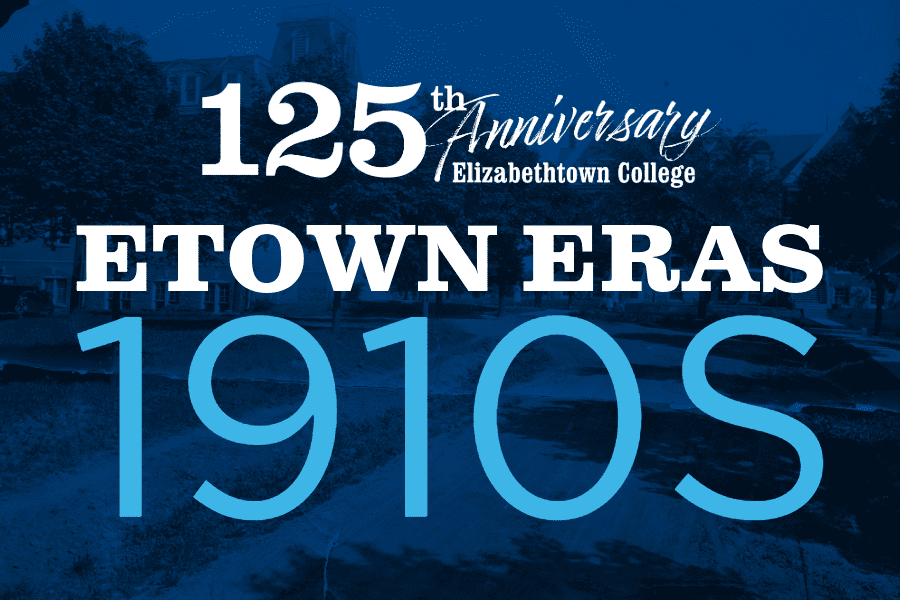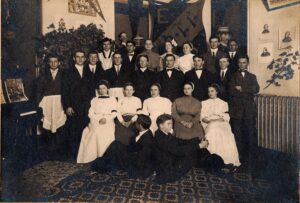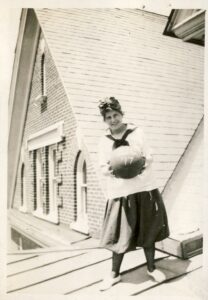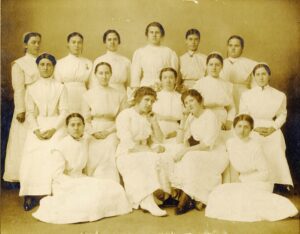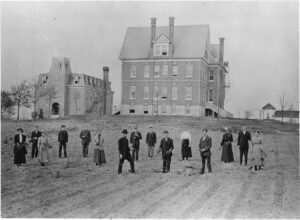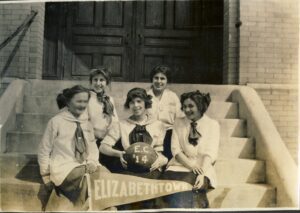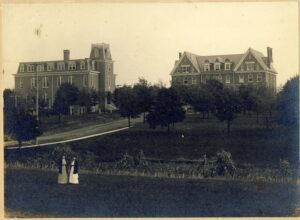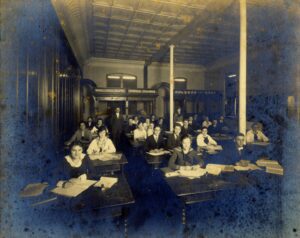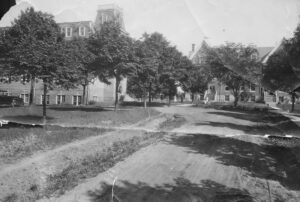Elizabethtown College entered the 1910s with a secure foundation and would continue to extend its roots during the decade.
The campus was home to two main buildings and by the middle of the decade, Etown had begun offering several four-year degree programs. Toward the end of the 1910s, a lengthy process to transfer ownership of the College from its original group of contributors to the Church of the Brethren took place, officially culminating in January 1919 with the delivery of a deed for all real estate held by the College.
Despite the challenges of World War 1 and a global influenza pandemic, Etown exited the 1910s in a position of strength and financial security thanks to a successful endowment fund campaign and was well-prepared to usher in an upcoming decade of unprecedented growth.
A Look Through the Decade
1910 – An agricultural course is added to the College catalog, bringing in many students from farming families.
1911 – The nearby Masonic homes in Elizabethtown were built, showing the growth in the community surrounding the College.
1914 – Charles Abba (A.C.) Baugher first steps foot on campus as a student in April. He continued to be significantly involved as a professor and president at the College until his death in 1962.
1915 – The College motto Educate for Service came into use.
1916 – The Student Volunteer Band is formed with a dedication to service and missions.
1918 – The global influenza pandemic starts. The College remains healthy, only closing for four weeks at the height of the epidemic.
1919 – On Jan. 2, the Church of the Brethren officially assumed ownership of Elizabethtown College after a four-year process. It continued to govern the College until 1993.
1919 – By the end of the decade, the surrounding Elizabethtown community had more than doubled.
Snapshots of the Decade
- Sleigh ride at Walter Gish home, Class of 1910
- Senior party, Class of 1911
- Physical Education class, 1913-14
- Men’s Basketball Team, 1913
- Women’s Basketball player on roof of Alpha Hall, 1917
- Sewing class, 1913
- Agriculture class, 1914
- Women’s Basketball Team, 1914
- Campus view of Rider Memorial Hall and Alpha Hall, 1912
- Class at Etown, 1920
- Campus postcard, 1920
- Rufus Elam Zug (2nd on L) and friends, 1912
Throughout Elizabethtown College’s 125th anniversary year, follow along as we share 125 compelling stories about the College’s defining moments, alumni stories, and fun facts since our founding in 1899 at etown.edu.

